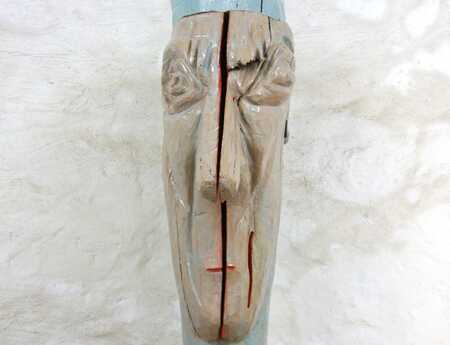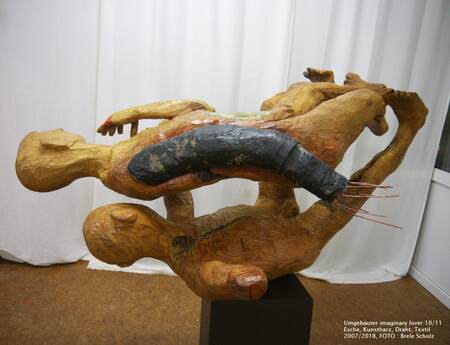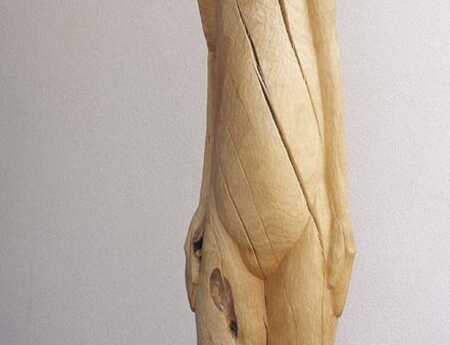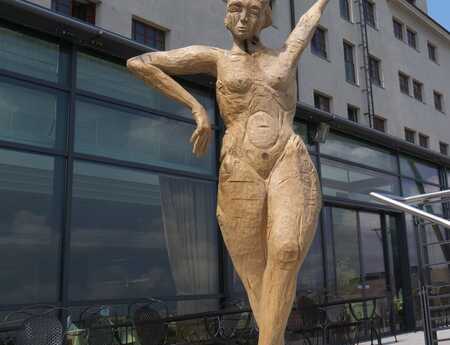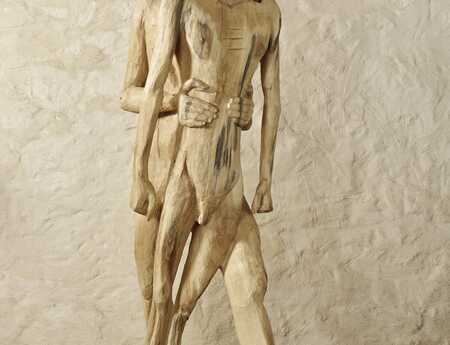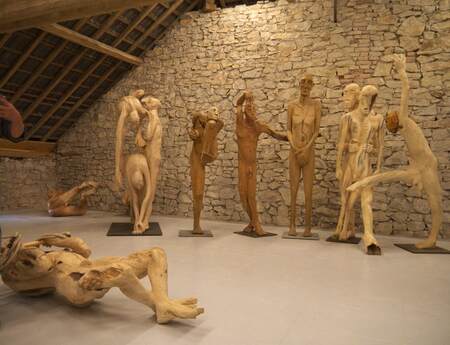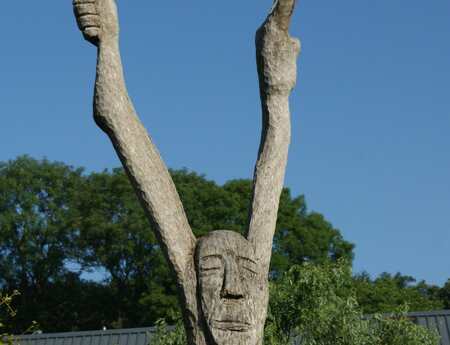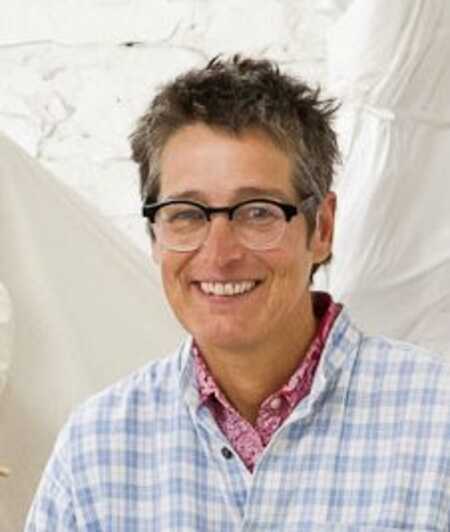
Germany
Brele Scholz
Auszug aus: Die Angst der Bildhauerin vor dem ersten Schnitt - Brele Scholz im Gespräch mit Susanne Geuer
Welche motivation treibt sie skulpturen zu machen?
Skulpturen mache ich, weil ich sie machen will. Ich könnte auch sagen, weil mich nichts anderes so sehr interessiert. Das ist ein Prozess des sich Hineinbegebens in eine Sache. Man geht einen Weg, geht um diese Ecke und um jene Ecke und findet sich an Weggabelungen, wo die Wahlmöglichkeiten schon innerhalb der Kunst liegen, meinetwegen zwischen der Fotografie und der Bildhauerei. Es ist ein schöner Irrgarten …
Das ist ein starkes Bild. Können Sie genauer sagen, was Sie damit verbinden?
Nun, der Irrgarten ist für mich ein Synonym für das Leben. Unsere Aufgabe ist es, sich auf das zu konzentrieren, was wir gut können und die Notwendigkeiten, die uns widerfahren zu integrieren. Der Irrgarten leitet mich und gibt mir ständig Wahlmöglichkeiten, Entscheidungsfreiheiten. Der Irrgarten verbietet mir auch, das Ziel zu sehen. Darin liegt für mich ein wichtiger Aspekt der (Zweck)Freiheit in der Kunst...
Taken from: The sculptor’s anxiety before making the first cut - Susanne Geuer Talking to Brele Scholz
What motivation drives you to create sculptures?
I make sculptures because I want to make them. I could just as easily say because nothing else interests me as much. It is a process of committing yourself to something. You go along, turn this or that corner and you find yourself at a fork in the road, where the possibility of choosing lies already within the arts themselves, say between photography and sculpture. It is a beautiful labyrinth….That’s a strong image.
Can you describe in more detail what the connection is for you?
Well, to me, the labyrinth is synonymous with life. It is our task to concentrate on and integrate what we are good at with that which befalls us. The labyrinth guides me and continuously allows me alternatives and the freedom to decide. At the same time, the labyrinth prevents me from seeing the destination. For me, this is an important aspect of freedom (of purpose) in art...
Welche motivation treibt sie skulpturen zu machen?
Skulpturen mache ich, weil ich sie machen will. Ich könnte auch sagen, weil mich nichts anderes so sehr interessiert. Das ist ein Prozess des sich Hineinbegebens in eine Sache. Man geht einen Weg, geht um diese Ecke und um jene Ecke und findet sich an Weggabelungen, wo die Wahlmöglichkeiten schon innerhalb der Kunst liegen, meinetwegen zwischen der Fotografie und der Bildhauerei. Es ist ein schöner Irrgarten …
Das ist ein starkes Bild. Können Sie genauer sagen, was Sie damit verbinden?
Nun, der Irrgarten ist für mich ein Synonym für das Leben. Unsere Aufgabe ist es, sich auf das zu konzentrieren, was wir gut können und die Notwendigkeiten, die uns widerfahren zu integrieren. Der Irrgarten leitet mich und gibt mir ständig Wahlmöglichkeiten, Entscheidungsfreiheiten. Der Irrgarten verbietet mir auch, das Ziel zu sehen. Darin liegt für mich ein wichtiger Aspekt der (Zweck)Freiheit in der Kunst...
Taken from: The sculptor’s anxiety before making the first cut - Susanne Geuer Talking to Brele Scholz
What motivation drives you to create sculptures?
I make sculptures because I want to make them. I could just as easily say because nothing else interests me as much. It is a process of committing yourself to something. You go along, turn this or that corner and you find yourself at a fork in the road, where the possibility of choosing lies already within the arts themselves, say between photography and sculpture. It is a beautiful labyrinth….That’s a strong image.
Can you describe in more detail what the connection is for you?
Well, to me, the labyrinth is synonymous with life. It is our task to concentrate on and integrate what we are good at with that which befalls us. The labyrinth guides me and continuously allows me alternatives and the freedom to decide. At the same time, the labyrinth prevents me from seeing the destination. For me, this is an important aspect of freedom (of purpose) in art...
